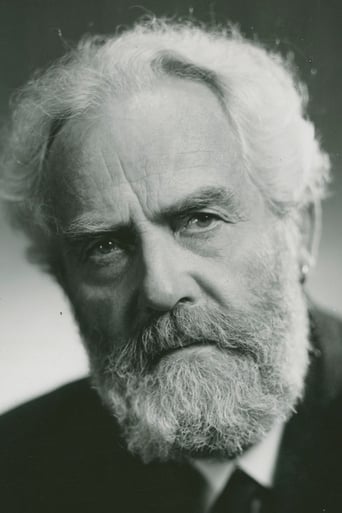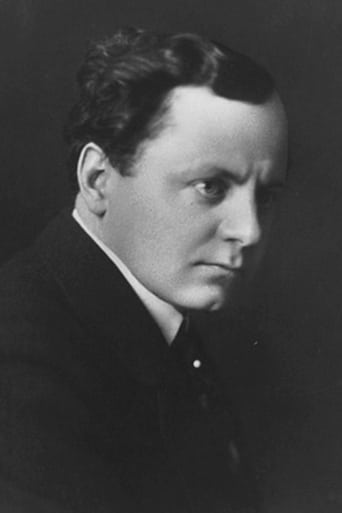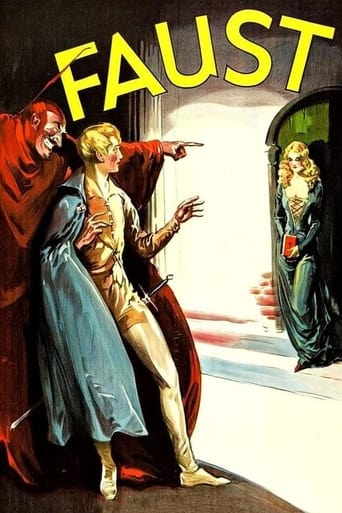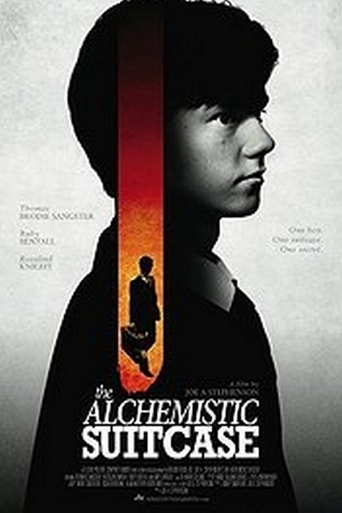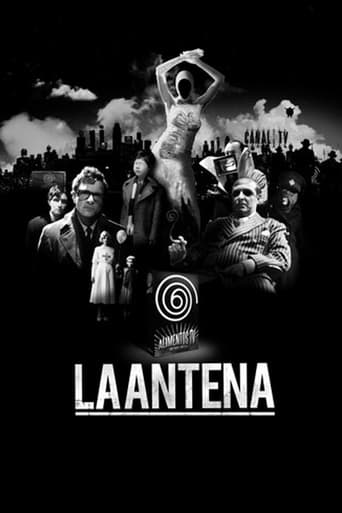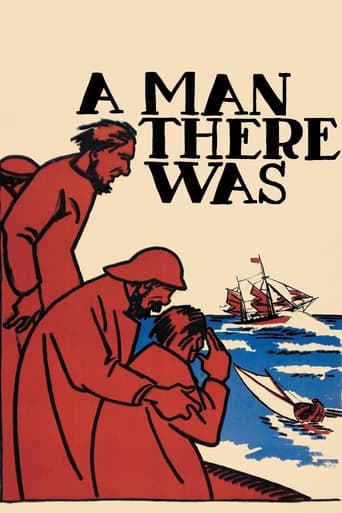
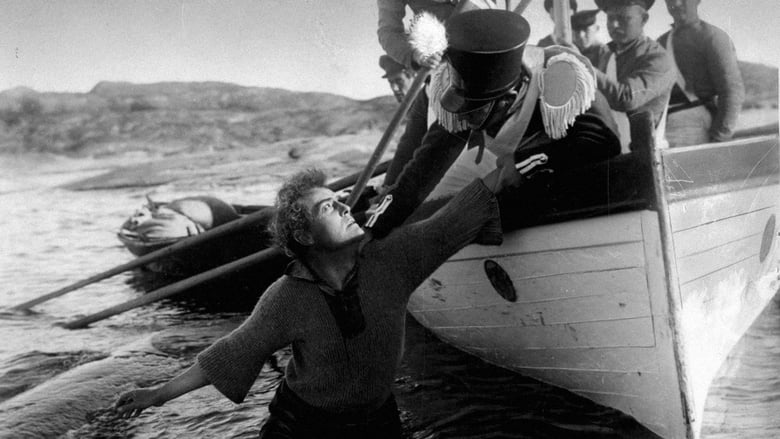
A Man There Was (1917)
Terje Vigen, a sailor, suffers the loss of his family through the inflexibility of another man. Years later, when his enemy's family finds itself dependent on his benevolence, Terje must decide whether to avenge himself.
Watch Trailer
Cast


Similar titles
Reviews
Waste of time
It’s an especially fun movie from a director and cast who are clearly having a good time allowing themselves to let loose.
In truth, there is barely enough story here to make a film.
It's entirely possible that sending the audience out feeling lousy was intentional
Poverty, loss, revenge, and man's inhumanity to man are the themes that propel director Victor Sjostrom's film TERJE VIGEN (1917) (listed here under its English title A MAN THERE WAS). Sjostrom portrays the title character in this adaptation of a poem by noted author Henrik Ibsen. Terje is a sailor who supports his small family in Norway. A blockade by the English navy causes Terje to undertake a dangerous voyage to get supplies for his family, but he is caught and imprisoned. When he learns of his family's death from starvation, he becomes a broken man. One day he comes unexpectedly face to face with the captain responsible for his imprisonment, as he and his family are caught in a violent storm. What choice will Terje Vigen make?The story is told in approximately one hour. Modern filmmakers could learn much from the economy and concision of these early features. The narrative is straightforward, simple and unadorned, with no padding or extraneous subplots, and the story is told most effectively. It uses title cards sparingly, and in a very interesting fashion. Lines from the original poem are displayed on the screen, then the action described in the lines takes place, and the viewer is able to follow from there. The actors do fine work in this film. Sjostrom proves to be a fine actor in the lead role, imbuing his character with dignity, sorrow, tenderness, anger, and many other emotions. The supporting cast is also effective, particularly Bergliot Husberg as Mrs. Vigen. The actors show restraint and naturalism in their parts, largely avoiding the tendency towards big melodramatic gestures that marked contemporary theatrical productions. Equally notable is the cinematography, which depicts both the beauty and the dangerous ferocity of the sea, as well as the starkness of the island landscapes. Sjostrom made very effective use of the Norwegian scenery, causing nature to become a character in its own right in the film. Tinting adds to the moody atmosphere. The camera is mostly stationary, according to the custom of the time, but the shots are very well composed, like paintings. In addition, the film is well edited, not allowing shots to go on longer than necessary. This film was definitely very moving and memorable. TERJE VIGEN is a compelling and concise tale of the effects of man's inhumanity to man, and of the dilemmas that individuals face when tempted to cast compassion aside. It is rendered effectively through succinct scripting, heartfelt and naturalistic acting, and artfully composed cinematography. It is definitely a masterpiece of silent cinema. SCORE: 10/10
This is a faithful adaptation of the eponymous poem by Henrik Ibsen, and all inter-titles are quotations of Ibsen's original text. The film follows an innovative non chronological structure. In the brief opening scene, old grey-haired Terje Vigen is contemplating a stormy sea. It is followed by a long flash back showing his past life first with his wife and daughter, his trip to Denmark, his capture by the English, his life as prisoner in England, and finally his return home. There is even a flashback in the flashback when, while in jail, Terje Vigen remembers his wife and daughter. The last part starts with the same scene as the opening one, followed by the rescue of the British yacht. It is interrupted by a brief flashback when Terje Vigen realises the Captain of the yacht is the Englishman who had taken him prisoner. The most remarkable aspect of the film is the outdoor on-location filming on the coast and on small boats, which gives great authenticity to the action, in particular the very realistic chase and sinking of the dinghy in the middle of reefs. Editing is brisk, cross-cutting between views of the two boats and then between the English boat and Terje Vigen trying to escape by swimming underwater.See more and a link to the full film at: a-cinema-history.blogspot.com/2013/12
I've been wanting to see more Sjostrom, hoping for something on the level of PHANTOM CARRIAGE. Although this one has nothing but rave reviews on IMDb, it didn't grab me as much. A melodrama about a man driven mad by tragic misfortune and cruelty, but it's hard to feel too sorry for him because he really didn't have a very good plan. Maybe I'm being harsh, but despite a strong performance by Sjostrom I just wasn't emotionally invested enough to care that much about his troubles. However, technically it's very impressive for its time and features some stunning nautical cinematography and a haunting final image that serves as a strong counterpoint to the redemptive theme. You can also see Sjostrom's man vs. nature motif emerging, further developed in THE OUTLAW AND HIS WIFE and of course THE WIND.
'Terje Vigen' is probably the purest example in Sjostrom's work of the conflict between the natural world and civilisation. It is this theme, his facility with action narratives, and his privileging of monumental landscapes that bring him closer to the American Western than his most famous compatriot and pupil, Ingmar Bergman.'Terje' is based on an epic poem by Ibsen, a writer most famous for his plays. The plot is simple enough - Terje Vigen is a salty old sea-dog in the early 19th century, tired of a hard, marine life, who settles down to blissful domesticity with his weaving wife and young child. After five years, however, the Napoleonic Wars break out, and the resulting blockade by the English forces the small community into starvation. Vigen decides to row to a village across the sea to smuggle food for his family; evading the English naval lookout on his way out, he is captured on his return, and thrown into jail for five years. Returning a forgotten man, he finds his house occupied by strangers and his family long dead. He becomes a broken, reclusive lighthouseman; one stormy night, he rescues his captor with his family. Will Vigen get his bitter revenge?'Terje' features sequences still unequalled in sea dramas - Vigen's clambering onto the huge yardarm to unfurl the sail; the entire smuggling sequence, from the silvery ripples of the water as Vigen rows away from his wife, radiating away from her towards his doom, to his first evasion from the navy, hiding in an improvised hole, to the terrifying hunt, a brilliantly edited suspense sequence, with one man, old Vigen, chased by a crew of young professionals, to the messy, tortuous climax, Vigen struggling and diving, being shot at by frankly inept sailors.These action scenes, in which the natural world is an impassively fierce presence, are contrasted with the domestic - the scenes where he greets his wife and first meets his new child and plays with it are as touching and believable images of family life as anything in cinema ('Thomas Graal's first child' confirms Sjostrom's rare facility with children), while the communal scenes of near-famine are harrowing.But there is no easy split between nature and civilisation - Vigen's house is ominously framed by the vast sea, while his adventures on the waves are provoked by domestic needs. Neither is there a simplistic dichotomy between the 'truth' and 'honesty' of nature, and the hypocrisy of society. The latter might cause the murderous war and Vigen's imprisonment, but it also tempers Vigen's warped nature in the aftermath of his loss, where the sight of a family checks his destructive urges. The film closes with an astonishing image, a lingering shot of his family's grave overlooking the sea at sunset. It has an immense, metaphysical, enigmatic, uncanny impact, somewhat frightening in its restfulness, that is closer to Bergman (the sing-song, ye-olde-Englishe translation of Ibsen's verse in the intertitles are unintentionally, distractingly comic)


